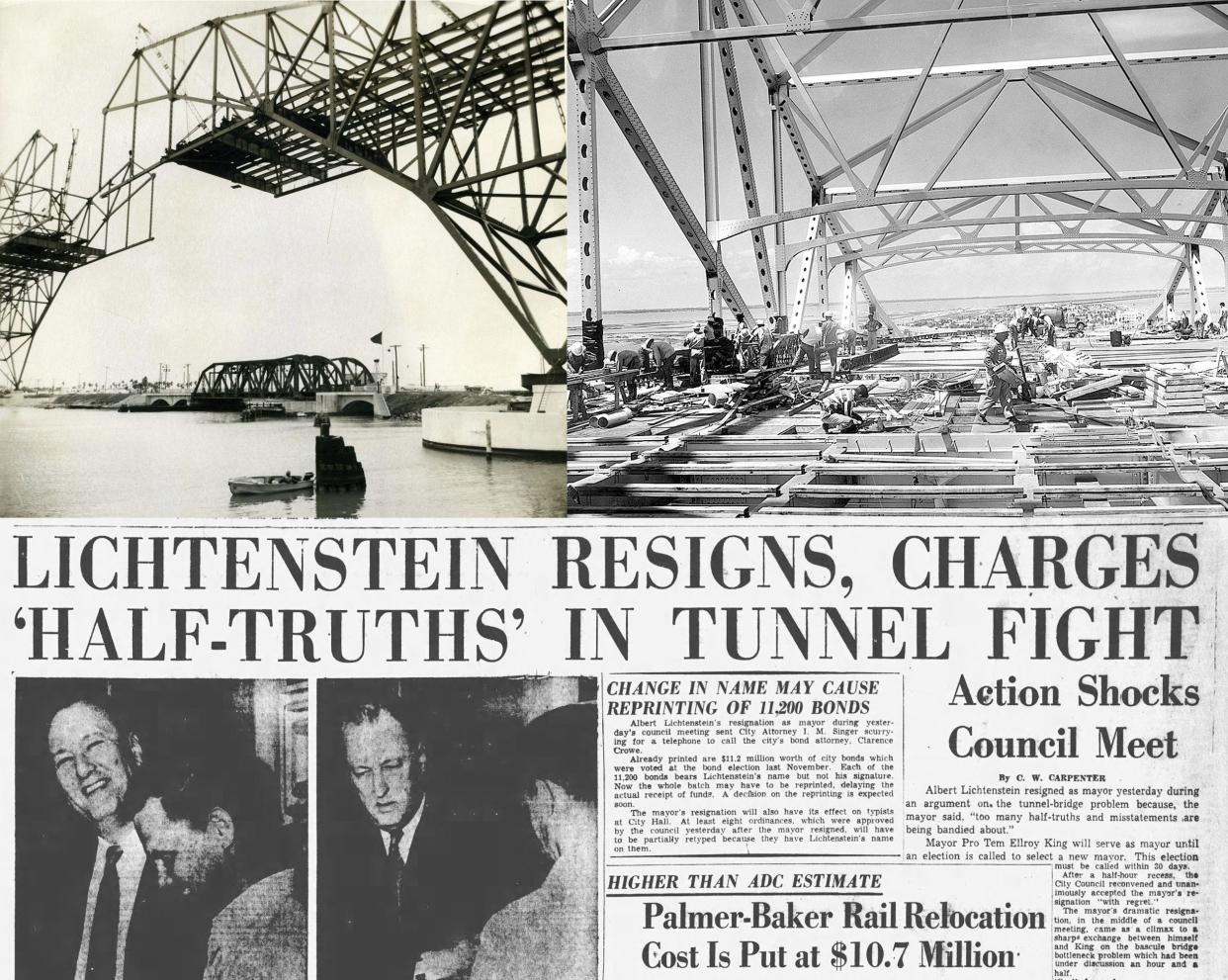#TBT: How the Harbor Bridge caused a mayor’s resignation in 1954

Who knew a bridge could cause so much controversy? The Harbor Bridge may be in the process of replacement, but it has been the center of controversy for decades, including before it was designed. The fight even resulted in the mayor’s dramatic resignation in the middle of a City Council meeting.
As the city grew larger in the early 20th century, highway and city officials knew the bascule bridge, connecting North Beach and downtown Corpus Christi, needed to go. Since the bridge's opening in 1926, the bottlenecks that affected car, ship and rail traffic grew larger every year.
Two options were presented to replace the bascule bridge: a high bridge or a tunnel.
More:#TBT: First vehicles traveled Corpus Christi's Harbor Bridge in October 1959
In both 1936 and 1938, the Public Works Administration rejected city applications for financial aid to build a tunnel to replace the bascule bridge. In 1950, the Corpus Christi Chamber of Commerce created the Area Development Committee to draft a plan for improving the bottleneck. Its research concluded in 1952 that a tunnel would be too expensive and a high bridge necessary. Later that year, new legislation freed up federal funding for relocating rail and highways, plus another company came through with a lower-priced tunnel design. A tunnel was again considered feasible.
By 1954, support for the tunnel option continued to grow, but as a toll tunnel. The state highway commission, the predecessor of the Texas Department of Transportation, came back with the offer of funding a high bridge if local officials furnished the right of way. If the ADC continued with its toll tunnel proposal, the state would be obligated to build a second entrance into the city that was toll-free. Local officials again asked the state to support the tunnel proposal, but the commission chairman refused, citing the higher cost of construction and maintenance and the fact that a tunnel would exclude certain types of traffic including gasoline trucks.
More:#TBT: City preserved views of Corpus Christi Bay, creating parks along Ocean Drive in '70s
It all came to a head in a dramatic City Council meeting on March 24, 1954. Mayor Albert Lichtenstein and Mayor Pro Tem Ellroy King had been going back and forth for most of the hour-and-a-half meeting, attempting to clarify what funding the state would provide for a bridge or what federal funds would be available for a tunnel. Lichtenstein wanted a vote to select the tunnel, but King continued to say that the funding wasn’t there for a tunnel. Finally, Lichtenstein had enough.
“Too many half-truths and misstatements are being bandied about, and I can’t leave them unanswered," Lichtenstein said. “Since I can’t renege on a previous assertion that I would have no further statements to make on the bascule bridge problem, I can’t answer these half-truths, so I hereby resign as mayor.”
Lichtenstein then left the council table and sat down in the spectator section of the council chambers. He didn’t even pick up his briefcase from the council table, noted the Caller-Times article.
King, the other council members and spectators were in disbelief. King turned to City Attorney I.M. Singer and asked, “Well, what is the status of city government now?”
Lichtenstein stated from the audience, “I have resigned from my office and I request that it be so entered on the record. I want you to do whatever you have to do to make it official.”
The remaining council members made a motion to enter recess to consider their next action.
The Caller-Times pointed out that Lichtenstein was the fourth mayor to resign his position at that point in the city’s history. He had been elected the previous April and made national headlines because he was on vacation in Europe during the campaign and election. The council asked Councilman P.C. Callaway to consider running for mayor, and in June he was elected mayor in a special election.
As for the tunnel versus bridge debate, in April the council officially rejected the tunnel proposal despite the continuing controversy and notified the state it would accept the offer of a high bridge. The following month, city, county and navigation district officials accepted the offer as well, and planning began. By June 1956, construction began on the new high bridge, and on Oct. 23, 1959, traffic began streaming across the city’s new Harbor Bridge.
Allison Ehrlich writes about things to do in South Texas and has a weekly Throwback Thursday column on local history.
This article originally appeared on Corpus Christi Caller Times: #TBT: How the Harbor Bridge caused a mayor’s resignation in 1954

